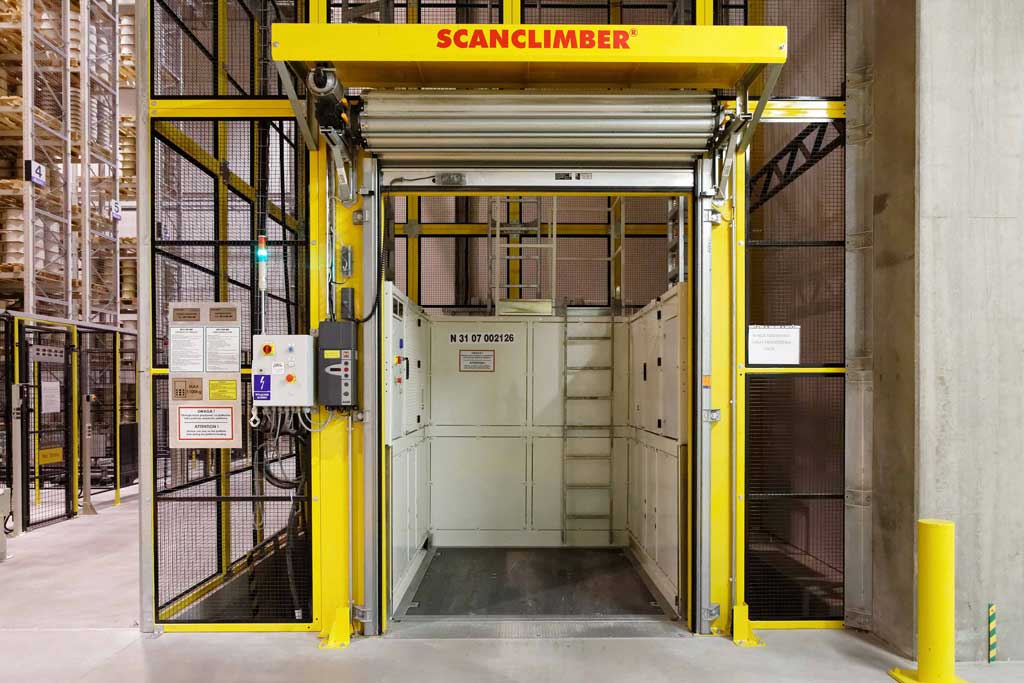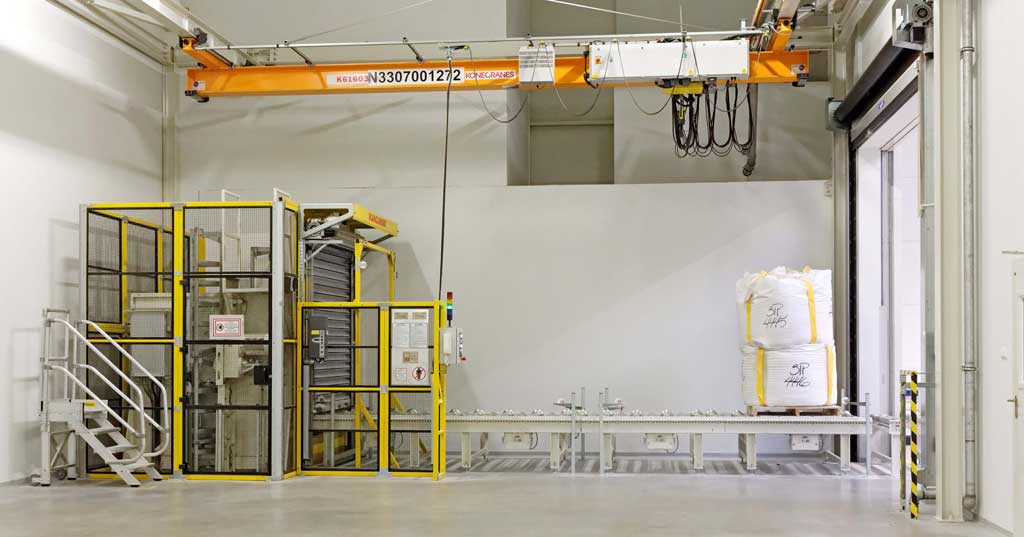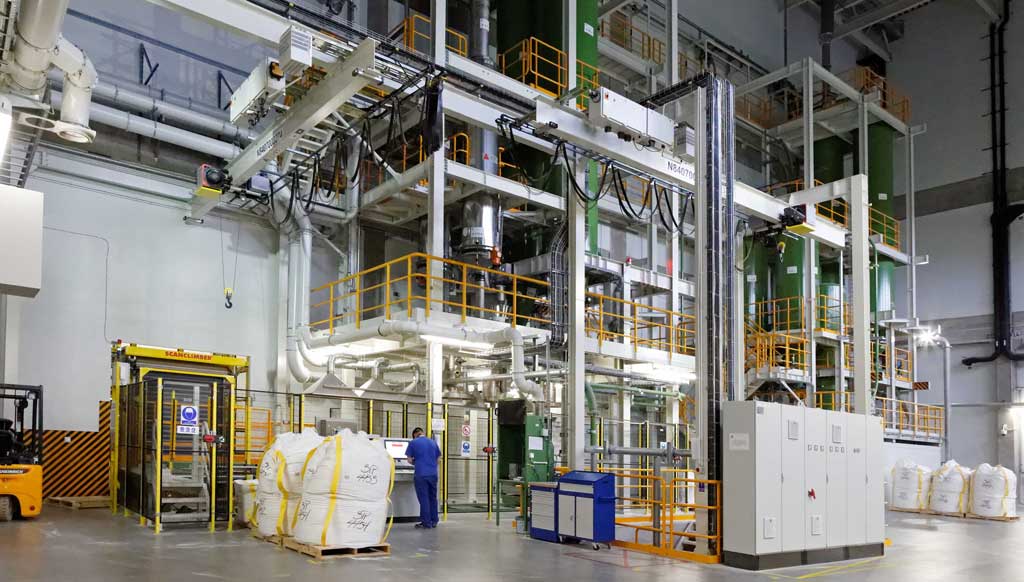Takenaka Corp. Japan constructed a modern ceramics factory for NGK in Poland. An automated material handling system was implemented at the factory for higher productivity. Scanclimber played a part in this successful automation project.
Background
Takenaka Corporation is one of Japan's oldest construction companies. Its history dates back to the 16th century. The company operates worldwide, mainly working on infrastructure projects. In 2012 Takenaka was building a ceramics factory for NGK in Gliwice, Poland. The factory's layout and infrastructure were also designed by the Takenaka Corporation. Automated production and material handling were key points of this project. The target was to design a factory where labor costs and manual processes would be minimized.
A specialized machine supplier was required to achieve this goal. Takenaka needed a supplier that had flexible industrial elevators and had the capability of customizing them according to their automation needs.
Scanclimber made a joint project with a conveyor line supplier and a door supplier to provide a solution. NGK ceramics' plant's three-floor transport line was successfully automated with lightweight Scanclimber hoists integrated with horizontal conveyer belts and doors with sensors. One of the key reasons for Takenaka to choose Scanclimber products was based on their philosophy to only use high-quality products.
Challenges
The design of the NGK Ceramic factory included a high level of automation. The amount of manual work was to be minimized. This meant that the full transport line in three floors should operate nearly unattended. The main difficulty for Scanclimber in providing a solution was the need to integrate a vertical material transportation module (hoist/elevator) with horizontal conveyors.

There were certain challenges in implementing such a system:
- The search for adequate suppliers for the project
- The seamless operation of vertically and horizontally moving modules.
The seamless operation of all transport line components was important for Takenaka. Other proposed solutions were not seen as adaptable or flexible enough. The biggest challenge was to find a horizontal conveyor line which could be seamlessly integrated with a vertical lifting machine on three floors
Objectives achieved
Scanclimber was chosen considering the challenging aspects of the project and the various properties of our products. Takenaka appreciated product quality, safety, adaptability, durability and the applicability to different industries.
A station for the hoist was established on each floor of the building during the installation phase. The hoist included a small roller table at the height of the conveyor rollers outside of the hoist for material transportation. The gates of the hoist had automated sensors which would open the doors when the hoist reached the right floor so it could move the materials out to the conveyers directing them to their production units. The hoist’s vertical movement was along two mast sections on the sides in order to ensure stability. The manual handling of materials was successfully minimized after the implementation of Scanclimber's hoists in the NGK Ceramics factory.

| Project Facts | |||
|---|---|---|---|
| Hoist used | SC1120MF & SC1120MFL | ||
| Max height achieved |
14.65 meters (3 floor factory) | ||
| Max lifting capacity |
1100 kg | ||
| Project negotiations started |
November, 2011 | ||
| Order shipment |
February, 2012 | ||
| Main benefit of Scanclimber |
Automatic line for horizontal and vertical goods transport | ||
| Special features of project |
|
||
 RU
RU  PL
PL  FR
FR  DE
DE  EN
EN 
